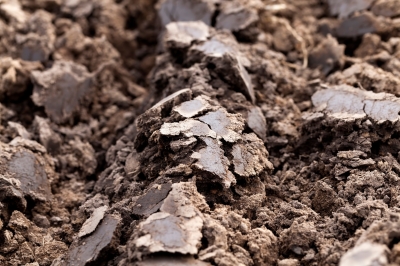On the other hand, it seems that these areas with shallow clay require more phosphorus than deep soils

Clay is a highly versatile material that can be molded, shaped, and formed into various objects and structures. It provides artists, architects, and designers with a wide range of creative possibilities. Clay's plasticity, or its ability to be easily shaped and molded, makes it an excellent material for pottery and ceramics. It allows for intricate details and fine craftsmanship. Clay is a naturally occurring material that is widely available in many parts of the world. Its abundance makes it a cost-effective and sustainable choice for various applications. Certain types of clay, such as fire clay, offer excellent thermal insulation properties. This makes them suitable for applications in high-temperature environments, such as furnaces and kilns. Clay has the ability to retain moisture, which can be beneficial in agriculture and horticulture. It helps to keep the soil moist, promoting plant growth and reducing water requirements.
Clay has excellent plasticity, meaning it can be easily shaped and molded into various forms. This makes it a preferred material for artists, potters, sculptors, and designers who can utilize its flexibility to create intricate and detailed objects. Clay is a natural resource found in abundance in many regions around the world. Its widespread availability makes it a cost-effective material for various industries and applications. Its affordability allows for widespread use across different sectors. Clay offers a natural and earthy aesthetic appeal that is highly valued in pottery, ceramics, and architectural design. The ability to create unique textures, glazes, and finishes adds to its attractiveness in artistic and decorative applications. Certain types of clay, such as fire clay, possess excellent thermal insulation properties. This makes them valuable for applications in high-temperature environments such as kilns, furnaces, and fireplaces.
Clay soils create unique problems, one of which is erosion. These types of soils are easily eroded even in low slope lands. This is because water does not pass through the clay layer quickly, which can lead to surface erosion. Spring erosion is often more severe after plowing fields. But clay soils often require this plowing to prevent the soil from being too wet. Farmers on clay soils probably need less potassium than is usually recommended. This is because clay soils are inherently rich in potassium. This is especially true where the clay layer is closer to the soil surface. On the other hand, it seems that these areas with shallow clay require more phosphorus than deep soils. Because phosphorus sticks to the acidic layer of clay.
Clay has the ability to absorb and retain moisture, making it useful in applications such as soil conditioning, agriculture, and horticulture. It helps regulate moisture levels in soil, improve water retention, and promote plant growth. Some types of clay, such as bentonite, exhibit Chemical resistance and can be used in applications where there is a need to contain or control chemical substances. Bentonite, for example, is used in drilling fluids, wastewater treatment, and sealing applications. Clay has been used by human civilizations for thousands of years, making it deeply rooted in traditional and cultural practices. Its historical significance and versatility have led to its continued use in various crafts, rituals, and traditional arts around the world. Clay is a natural and renewable resource, which aligns with the principles of sustainability. It can be recycled, reused, or returned to nature without causing significant harm to the environment, making it a preferred material for eco-conscious individuals and industries.
Clay has a tendency to shrink and crack during drying and firing processes. Proper handling and drying techniques are necessary to minimize these issues. In its raw state, clay can be relatively weak and brittle. While firing can increase its strength, certain types of clay may still have limitations in terms of structural integrity. Clay requires sufficient drying and firing time, which can be time-consuming, especially for larger or thicker pieces. Slow drying and firing processes are necessary to prevent cracking and ensure proper strength development.
While clay can retain moisture, it is also vulnerable to water damage. Unfired clay objects can easily dissolve or deform if they come into contact with water before being fired. Some types of clay may be susceptible to chemical reactions or weathering effects over time. It is important to choose the appropriate type of clay for specific applications and environmental conditions. The extraction of clay from the earth can have environmental consequences, such as landscape alteration, soil erosion, and habitat disruption. Responsible mining practices and clay recycling initiatives can help mitigate these impacts.





